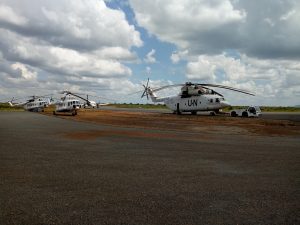In the heart of Africa lies a land steeped in history and culture – Darfur. This region, known for its breathtaking landscapes and vibrant communities, has a fascinating past that is intricately intertwined with the historical importance and impact of its trade routes. These ancient pathways served as conduits for goods, ideas, and cultural exchange, shaping the destiny of Darfur and leaving an indelible mark on its people.
1. The Historical Importance of Darfur’s Trade Routes
1.1. Crossroads of Commerce
Darfur’s strategic location at the crossroads of major trade routes made it a hub of commercial activity. Traversing vast distances, these routes connected Darfur with the Mediterranean, the Nile Valley, and various regions across Africa. The trade of precious goods, such as gold, ivory, spices, and slaves, flowed through these routes, making Darfur a coveted center of economic prosperity.
1.2. Cultural Exchange and Intellectual Development
As caravans journeyed along the trade routes, they brought together people from diverse backgrounds, fostering cultural exchange and intellectual development. Ideas, languages, and customs intermingled, enriching the tapestry of Darfur’s cultural heritage. The routes acted as conduits for the transmission of knowledge, facilitating the exchange of scholarly works, religious teachings, and artistic influences.
1.3. Empires and Dynasties
The trade routes in Darfur played a pivotal role in the rise and fall of empires and dynasties. The wealth generated from trade bolstered the power of local rulers, enabling them to build formidable kingdoms. These rulers, such as the Tunjur and Fur dynasties, left a lasting impact on the region’s political landscape, shaping its governance and societal structures.
2. The Impact of Darfur’s Trade Routes
2.1. Economic Prosperity
The trade routes brought prosperity to Darfur, fueling economic growth and stimulating the development of towns and cities. The influx of goods and wealth spurred the creation of marketplaces, where traders and merchants converged, creating a vibrant commercial ecosystem. The economic prosperity generated by these routes contributed to the overall advancement of the region.
2.2. Urbanization and Cultural Flourishing
As trade flourished, urban centers emerged along the trade routes. These settlements became melting pots of culture, where people from different backgrounds converged. The intermingling of diverse communities led to the flourishing of art, architecture, music, and literature. The urban centers became vibrant hubs of creativity and intellectual pursuits, leaving a lasting impact on Darfur’s cultural landscape.
2.3. Political Transformations

The wealth accumulated from trade influenced the political dynamics of Darfur. Powerful trading families rose to prominence, exerting considerable influence on governance and decision-making. The rulers of Darfur, recognizing the significance of the trade routes, sought to control and protect them, often forming alliances or engaging in conflicts to safeguard their interests. These political transformations shaped the course of Darfur’s history.
3. Preservation and Recognition
3.1. Challenges of Preservation
While the trade routes of Darfur have left an indelible mark on the region, their preservation faces numerous challenges. Modernization, infrastructure development, and changing economic dynamics have altered the traditional trade patterns, jeopardizing the historical importance and impact of these routes. Efforts must be made to protect and conserve this invaluable heritage for future generations.
3.2. Recognition and Tourism
Recognizing the historical importance of Darfur’s trade routes can pave the way for their promotion as cultural heritage sites. Preserving these routes and showcasing their significance can attract tourists, researchers, and history enthusiasts from around the world. Such recognition not only promotes tourism but also generates awareness about the rich history and cultural heritage of Darfur.
Conclusion:
The historical importance and impact of Darfur’s trade routes are imprinted in the very fabric of this remarkable region. These ancient pathways served as lifelines, fostering economic prosperity, cultural exchange, and political transformations. While facing challenges in the modern era, the preservation and recognition of these routes are crucial for celebrating Darfur’s rich heritage and ensuring its legacy for generations to come. Exploring the historical importance and impact of Darfur’s trade routes offers a glimpse into the vibrant tapestry of the region’s past, connecting us to a world shaped by commerce, cultural exchange, and human aspirations.

